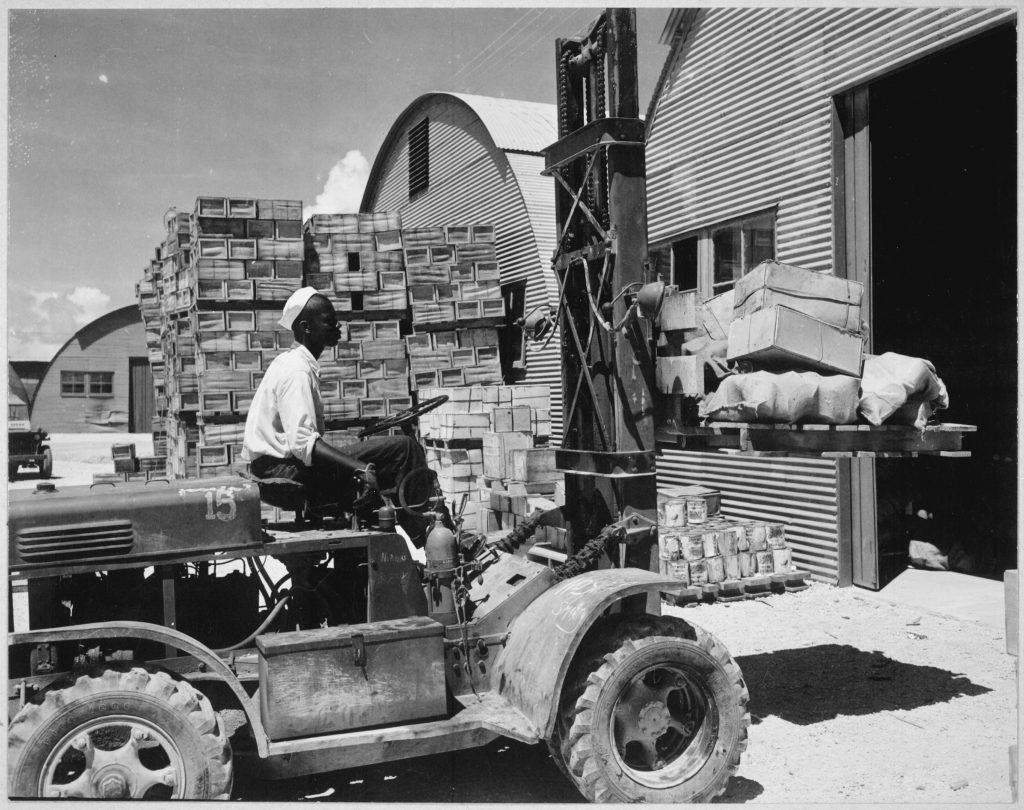When Were Forklifts Invented and Other History Questions Answered

Few tools are as essential to the modern logistics and construction industries as the humble forklift. Despite its omnipresence in warehouses and job sites around the world, forklifts rarely get the respect they deserve. Today, we’ll dive deep into forklift history to explain when were forklifts invented, their impact on our society at large, and take a look at their continued role on construction sites and in factories across the planet.
The First Forklift
Necessity is the mother of invention, as the well-known adage goes. And that’s precisely how the forklift came about. Just when were forklifts invented, you might ask? During the early 20th century, farmers, factory workers and others required the ability to lift heavy loads for transport & storage. The very first “lift-truck” was used in Altoona, Pennsylvania, to help rail workers load cargo onto elevated train platforms.
As the First World War approached, increasing industrialization demanded a more efficient way to handle war material and even commercial cargo. The very first forklift trucks appeared in 1913-14, just in time for the war in Europe. Forklifts helped all the countries involved in WWI to better handle the complicated logistics of “total war.”
Better loading and organization methods soon followed. By the 1930s, the very first pallets were invented. This simplified the entire warehousing and storage process. Soon, forklifts were designed around the general principle of carrying pallets. This helped standardize things like fork width, but individual lifts started showing neat new features – including safety-friendly features that took into account the operator, not just the cargo.
This was long before OSHA was created in 1970. It’s interesting to look back on forklift design before OSHA. Thankfully, today’s forklift drivers operate in a much more safety-conscious environment. We’ve come a long way from the first forklift!
Who Invented the Forklift?
Like many revolutionary pieces of technology, the origins of the forklift can’t be traced back to a single person. To understand who invented the forklift, it helps to take a look at how the design of the modern forklift evolved. Battery powered platform trucks used on the railroad provided a basis for other innovators to build upon. Labor shortages in 1917 led one company to begin using powered lift tractors in their factories. From there, hydraulic power was leveraged along with the invention of the first electric power forklifts. By the time WWII began, forklifts were commonplace and in use in factories and construction sites globally.
Because there’s no individual person to point to for details on when was the forklift invented, it can appear as though history is muddled. In reality, though, forklift history was forged out of necessity. Because the modern forklift didn’t emerge fully formed, its evolution is all the more impressive. Human innovation is indeed admirable, especially when it is built upon over the decades.
Forklift History and Modern Use
To understand forklift history better, it helps to look at life before its invention. Much like today’s warehouses, early warehouses were filled with stacked and shelved items. Over time, we learned more about physics and the advantages of simple machines like hoists and pulleys. These simple features were commonplace in the early warehouse. They had their limitations, however. Most hoists and pulleys could only lift heavy loads a few feet off the ground, and their side to side mobility was limited or even non-existent. Early warehouse workers were still heavily dependent on manpower to move objects. This also limited the height of stacks and shelves. Usable space in the warehouse limited as well.
The modern forklift is a marvel of human invention and engineering. It has made moving and lifting heavy loads nearly effortless. However, they are not without their dangers. Just like lifts of days gone by, forklifts can be dangerous. It’s essential that every warehouse uses a well-established training and certification program for their forklift operators. Forklift invention has made warehouse jobs easier, but with so many new features, an untrained operator can be as dangerous as a man trying to lift a heavy load with just a rope and a pulley.
The Importance of Forklift Safety
The history of the forklift continues to be written each day. While we’ve certainly come a long way from that very first forklift, these powerful machines command greater respect than ever. Fail to use a forklift properly and accidents may happen. That’s why it’s so important that forklift operators are trained before they begin using them in the workplace. Proper education can do wonders to prevent accidents and keep your workplace injury-free.
OSHA fines and penalties are another good reason to invest in quality forklift certification training. The Occupational Safety and Health Administration requires employers to get workers certified to operate forklifts before they begin work. Should OSHA perform an inspection and find that employees are not properly certified, an organization may bear the burden of expensive fines.
ForkliftCertification.com is your online resource for convenient, affordable forklift certification training. As forklift history has evolved, so too have the ways to train to use these powerful tools. With 3 different training courses available to fit your specific training requirements, we’ll help your safety program without breaking the bank. Our affordable & effective training modules are a smart solution in today’s ever-changing workplace.
Call us today to get started. You can speak with the FLC team at (888) 278-8896, or check out our contact page for other ways to get in touch.
